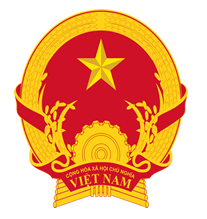Vietnam: Government
Key Figures
- Chief of State:
- President To Lam
- Head of Government:
- Prime Minister Pham Minh Chinh
Overview
- Government Name:
- Socialist Republic of Vietnam
- Constitution:
- Adopted: 1992; Communist Party of Vietnam holds the central role in politics and society. The constitution's focus on strict communist orthodoxy has become less important than economic development as a national priority as seen through recent amendments.
- Government Type:
- Communist State

Index of Economic Freedom
Country Risk Rating
Government Branches
| Main Powers | Election Process | Election Cycle 1 | |
|---|---|---|---|
| Executive | President serves as head of state, nominal commander of the armed forces and chairman of the Council of National Defense and Security. Prime Minister heads a cabinet composed of deputy prime ministers and heads of ministries and agencies, all confirmed by the National Assembly. |
The president is elected by the National Assembly and prime minister is appointed by the president. |
5 years |
| Judicial | Responsible for providing leadership to the Vietnamese court system, supervising the judicial process, and recommending bills to the National Assembly as appropriate under law. |
Justices are appointed by the National Assembly of Vietnam. |
5 years |
| Legislative | Responsible for fundamental domestic and foreign policies, socio-economic policies, defense and security issues, and it exercises supreme control over all state activities. |
National Assembly (Quoc-Hoi) 500 members are elected by absolute majority vote through a two-round system. |
5 years |
Regional Trade Blocs
International Organization Participation [2]
Environmental Agreements [3]
Tax Information [2]
- Tax Authority:
- Ministry of Finance
- Tax Name:
- VAT
Sources:
- ElectionGuide http://www.electionguide.org/
- EY, http://www.ey.com
- CIA World Factbook, https://www.cia.gov/the-world-factbook/
- U.S. Bilateral Relations Fact Sheets http://www.state.gov/r/pa/ei/bgn/


